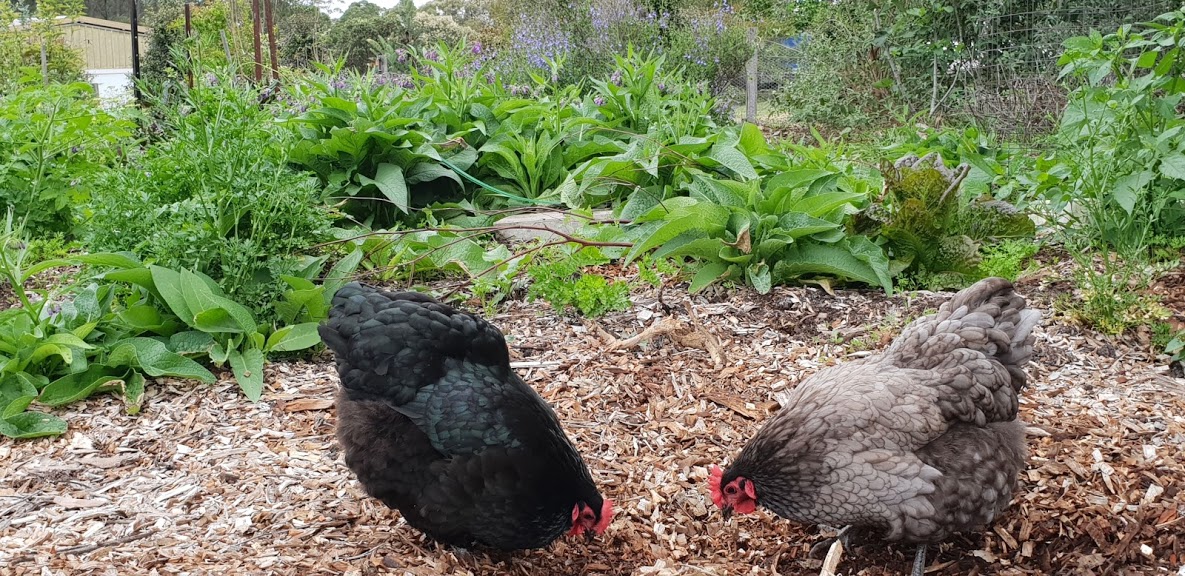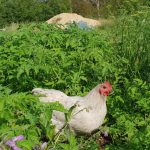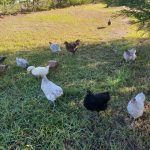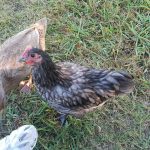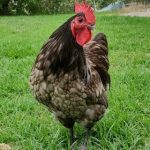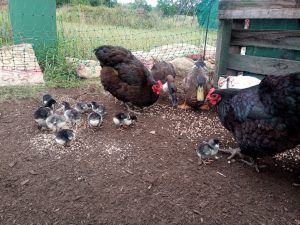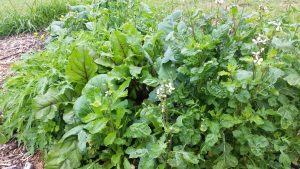My chickens and ducks have been a wonderful addition to my garden. I chose Australorp chickens as they are docile, good layers and do not go broody all the time (but enough to give you chicks if you want them). And yes, Australorps do come in colours other than black – I also have blue and splash in my new flock.
For my ducks I chose Indian Runner ducks. They are one of the better breeds for pest patrol and as they are more gentle on the garden than chickens are. They are good layers and don’t fly so are easily penned. My poultry will be allowed to free range through the property.
Integrating animals into a permaculture garden makes a huge difference to the system. Animals can play a role in reducing your workload and benefiting the overall health of the system while also providing you with produce such as eggs, milk, meat, etc.
Deciding to buy fertile eggs and hatch the chickens and ducks myself was an experience I do not regret. Despite the worry of having all these tiny lives hanging in my hands it was pure magic to watch and so much was learnt by being an integral part of the process.
So I want to share with you the three things which I feel has made the greatest impact on my flock – things that I will continue to do going forward. I hope you get something out of this that you can apply to your own hens (or other poultry).
ELECTRIC FENCING
It’s a story I’ve heard so many times in the past. The chickens are securely locked up in their coop for the night but somehow that fox still manages to find a way in and the entire flock is slaughtered. It happened to my neighbour…. Twice! So I started looking for a better way. My challenge was that I wanted to house my chickens in a chicken tractor that I could move all over the property. I wanted about 10 chickens so the chicken tractor needed to be reasonably large – but also needed to be light so it was easy to move around. It was looking like an impossible task to make this fox-proof. So I built a “chicken dome” made out of PVC pipe covered with fine mesh netting. Despite its size, it is so light I can almost lift it with one finger. It needs to be pegged down so it doesn’t blow away in the wind! It is far from fox-proof, but…. my dome tractor I then place inside electric poultry fencing. A physical barrier (such as your standard chicken coop) is a barrier that the predators seem to test again and again, coming back each night to look for weaknesses and trying to find a way in. A smart fox learns that persistence often pays off. A mental barrier (like an electric fence) is one which they will touch once and then won’t want to go near it again – the fox soon learns that this fence “bites”.
But I was a first timer to this and it was not without my failures. A friend of mine who has had chickens for many years said to me “You have to expect to lose a few before you find a way that works”. I scoffed at her comment for I was cocky – after all, I had the electric fence on my side! However, on my first attempt at erecting my electric fence I put the fence on uneven ground. It was shorting out in several places and I foolishly took on the “she’ll be right” attitude. That was my first heartbreaking loss, 2 chickens killed – and it was an important lesson for me. The chickens and ducks were moved to a more suitable location on flatter ground. My only other loss was when one of the hens somehow escaped the fenced area and ended up locked on the outside for the night.
I feel these 3 little lives hang heavily on my heart. I feel like I failed them. I’m sure that the fox (or whatever predator took my 3 babies) is still hanging around but it has never breached my electric fence again (not since I set it up correctly anyway).
Success # 1 – electric fence
FERMENTING CHICKEN FOOD
It is widely accepted that fermented foods can have numerous health benefits to humans so I extended this to my chickens and ducks and started looking for information on fermenting chicken food. To make it to germination, seeds and grains have mechanisms in place to preserve their vital proteins, minerals and fats that will go into their growth. The problem is that all this nutrition is effectively “locked up” and therefore not available to the chickens. Sprouting and/or fermenting seeds stimulates it to release all those inhibiting enzymes and phytates, unlocking their nutrients and making it available during digestion. This means the ducks and chickens are able to get more nutritional value from the food rather than it passing through unutilised and therefore do not need to consume as much.
I found my ducks and chickens to be eating machines. Despite free ranging all day with 3 acres at their disposal I was still going through a large amount of chicken food. So I started fermenting their food. Into a bucket of water I put cracked corn, wheat, chicken pellets, and a little apple cider vinegar (boosts the immune system and helps prevent intestinal worms, lice and mites). This I ferment for 3 days – stirring every day. I was pleased to find that, despite that they were growing bigger and should have been eating more, they actually started eating LESS.
On top of my fermenting practices, I thought about how chickens and ducks like to eat a lot of bugs (a high protein source). Since bugs are harder to come by in winter I decided to add a small amount of kitten food to their diet as a supplement. I had read that one of the secrets in getting a show bird to put on condition for an upcoming show is to feed them cat food as a supplement. So perhaps it isn’t all that uncommon. I also sprinkle a little diatomaceous earth onto the fermented mix as this is said to combat intestinal worms.
Success # 2 – fermenting the feed
NEW GIRLS ON THE BLOCK
So after my 3 losses I was down to 5 ducks and 8 chickens. Since 4 of these chickens are roosters it meant I’d end up with 1 rooster for only 4 hens. I didn’t like that ratio and went back to my breeder to pick up 3 more hens. I had read up on introducing new birds to your flock and to be honest, with all the bullying and establishing the new pecking order that I knew I was in for, it all seemed a little daunting.
I am aware that Australorps can be more accepting and laid back than some other breeds of chicken but I was still careful to get hens that were of a similar age to my current birds.
What I did I like to call a “soft introduction”.
At night the old flock was locked in the chicken dome while the new hens had their sleeping quarters outside the dome so they could all see each other but not gain access.
In the morning I would feed the two groups separately to make sure the new hens started their day with a good meal in their belly (ok, in their crops) and I didn’t have issues with them being chased away from the food by more dominant members of my flock.
During the day when they all free ranged I let all the birds out together. The new hens had plenty of room to run away and lots of places to hide if things got too rough for them. It was nearly impossible for them to get cornered by some bully. I also made sure there were multiple sources of food and water to prevent more dominant birds from stopping the new girls from gaining access. The new hens were gradually accepted by the others without having lost a single feather or worse, blood. I was also able to observe their acceptance into the main flock and to start locking them in the dome with the others at night when I felt the time was right. It was a peaceful transition.
Success # 3 – “Soft introduction” for new chickens
So now my chickens and ducks are coming up to 4 months old. The next few weeks are going to be torture – waiting for that first egg to arrive! Patience, although a virtue, is not my strongest attribute.
Now run outside and create your oasis!
Jo

